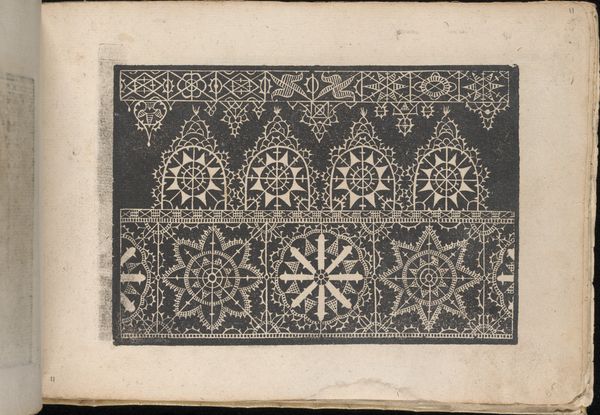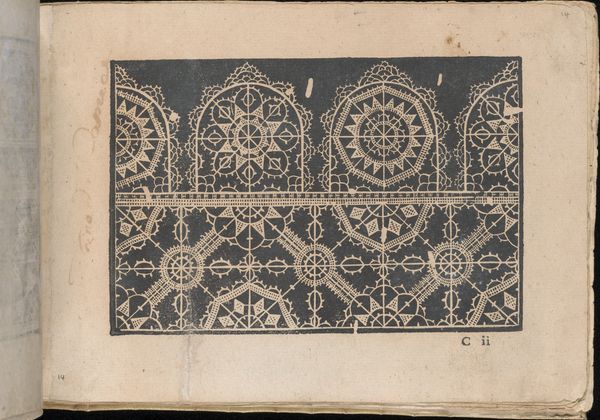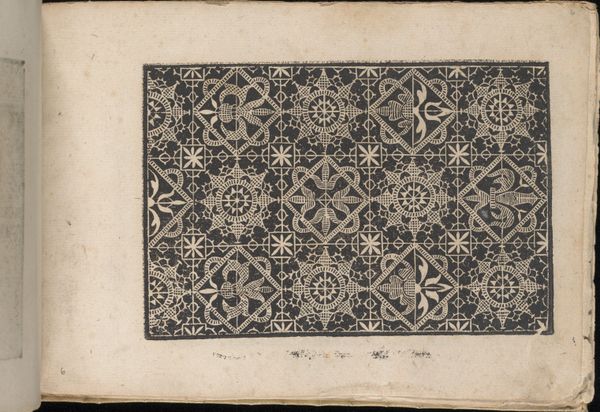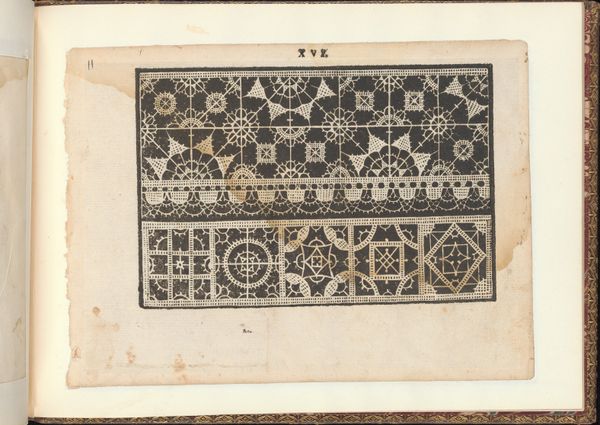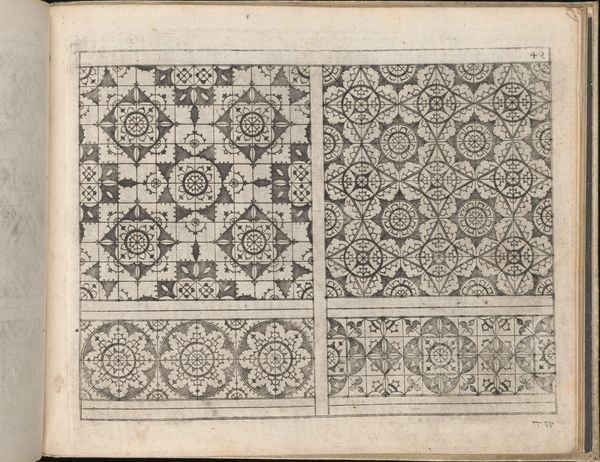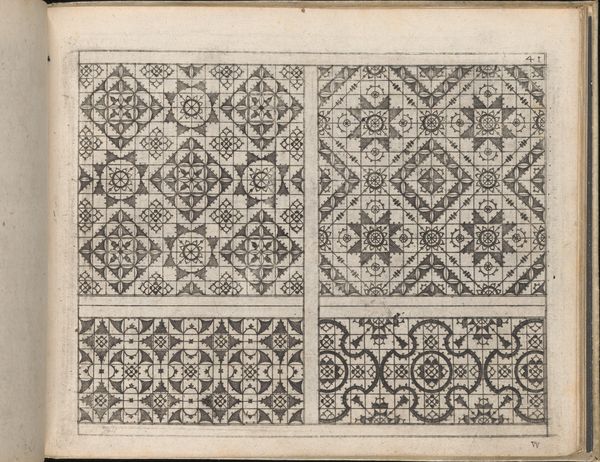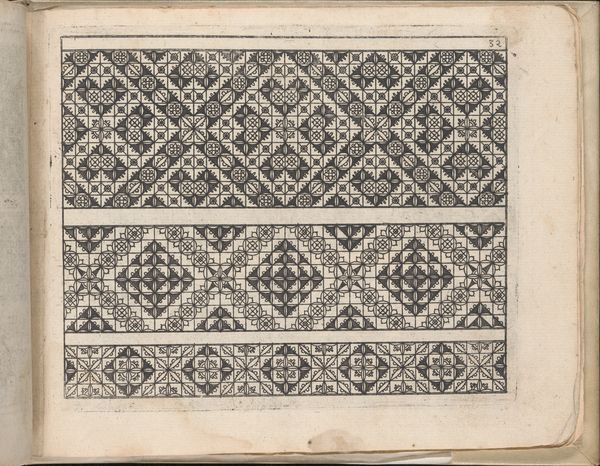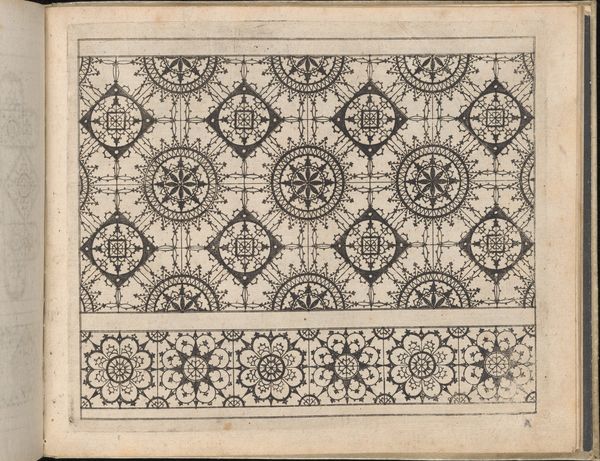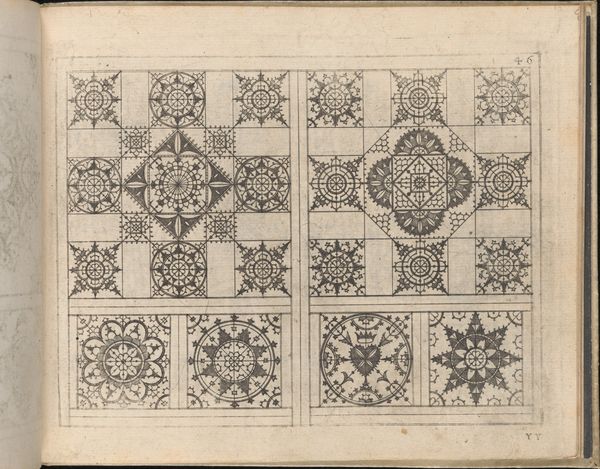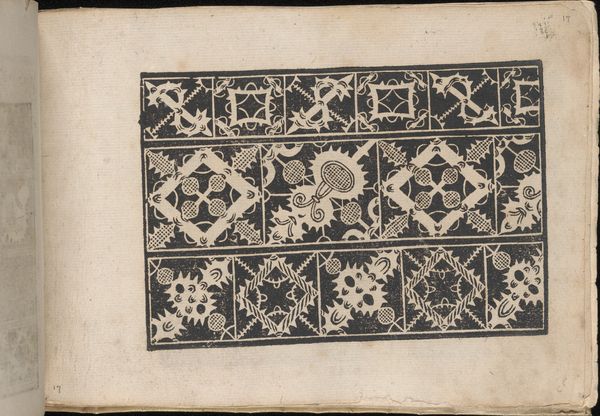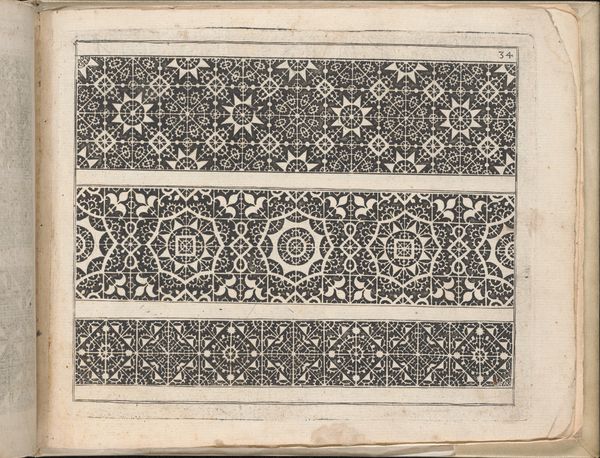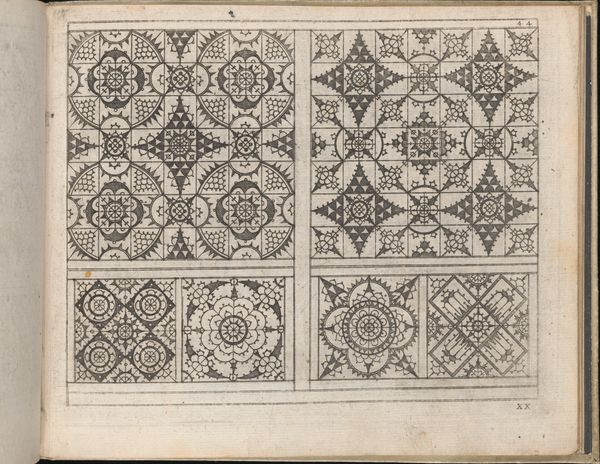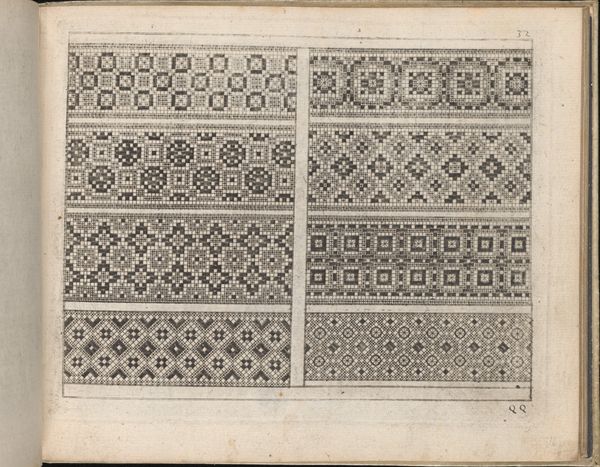
Fiori di Ricami Nuovamente Posti in Luce, page 13 (recto) 1591
0:00
0:00
drawing, ornament, print, engraving
#
drawing
#
ornament
# print
#
11_renaissance
#
geometric
#
engraving
Dimensions: Overall: 5 1/2 x 7 7/8 in. (14 x 20 cm)
Copyright: Public Domain
Curator: Looking at this engraving, it’s fascinating how crisp and ordered everything appears despite its intricate details. Editor: It has a strangely soothing effect, doesn’t it? Even though it is a reproduction from 1591, it is also contemporary in some way. Curator: Yes, its visual rhythms draw us in immediately. What we’re observing is folio 13 from Matteo Florimi’s "Fiori di Ricami Nuovamente Posti in Luce" at the Metropolitan Museum of Art. These are primarily graphic renditions demonstrating techniques for exquisite needle lace design and construction. Editor: “Fiori di Ricami” which translates to ‘embroidery flowers’ feels so indicative of Renaissance ideals in design that celebrated a connection to natural forms. The symmetry within asymmetry really appeals to me—two distinct rows separated by semi-circles form the central axis in an upper section, which is again echoed by two geometric bands with stellar shapes. Curator: The repetition, the controlled variations… these serve a practical purpose, though, rather than just a decorative one. Patterns were valuable commodities during the 16th century, easily shared and traded within communities where pattern books made needlecraft design accessible and widespread for all. Editor: Did these designs also have class connotations? I suppose the availability of instructional tools wouldn’t necessarily make it accessible for everybody to replicate patterns from that period. What purpose would lace have beyond signaling elite status, like refined garments to impress people in formal contexts? Curator: That’s exactly the nexus between artistry and social life that these patterns illuminate. Embroidery and lacework were important activities that spoke volumes regarding leisure, piety and cultural standing of their makers during that period. These were markers of a household’s economic sophistication. Editor: And in looking closer at this specific page, I admire how the anonymous artisan meticulously transformed negative spaces and lines, forming layers that both guide the hands in making patterns. Its sheer density draws us closer. I love its clarity of purpose, where functionality is the basis for artistry, while retaining a subtle element of beauty. Curator: I agree completely. Analyzing how something ostensibly functional can be beautiful in its very conception reveals essential information regarding Renaissance approaches to living artistically within cultural institutions. It forces viewers into interrogating form as the primary language here, transcending even context to elicit deeper responses. Editor: Indeed; thank you for expanding my own understanding with yours—these exchanges truly deepen our appreciation for works such as this.
Comments
No comments
Be the first to comment and join the conversation on the ultimate creative platform.
